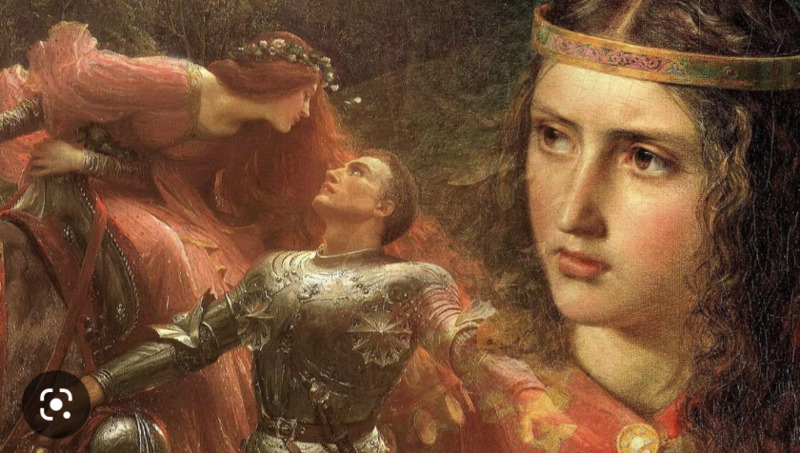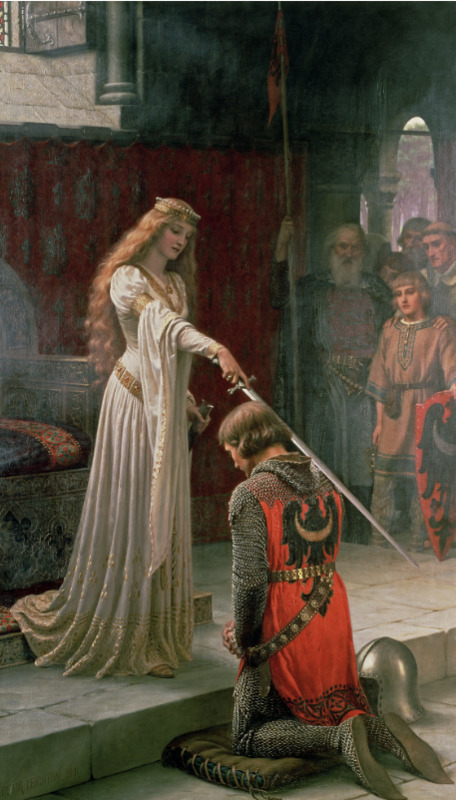Eleanor of Aquitaine and the Court of Love
In their mythological "Court of Love," held between 1166 and 1173 in the French city of Poitiers, Eleanor and her young aristocratic relatives were said to have acted as "advisors" on matters of the heart to ailing and confused lovers, oftentimes men.
Relationship dilemmas were at times addressed in the tenso songs of the troubadors, who thrived in this cultural capital. These songs were occasionally performed by both a man and a woman, or two women, with a third providing the final verdict.
It is theroized that, here in these "courts," the legendary and long-lasting medieval notion of chivarly - a code of conduct governing the behavior of knights and men courting women - was discussed, embraced, and practiced.
Many agree that Eleanor must have been a reliable source for advice on turblence or disatisfaction in the game of love. After all, she was first married to Louis VII of France, who has been described as having a quite cold demeanor. When their marriage fell apart, Eleanor linked up with Henry, Duke of Normandy - who would soon after become King Henry II of England. Needless to say, neither him nor his wife were believed to be faithful to one another.
The Court of Love was, as argued by some scholars, an attempt by Eleanor and her female collegues to establish their own reputations and accomplishments separate from their husbands'. The more "feminine" nature of it all suggests that these women wanted to "draw" men in and exert their own influence over them with their distinctive feminine wonder.
Eleanor seems to have possessed similar qualities to Ghismonda (from The Decameron), as she was a queen who "chose" her kings, maintaining her relationships with the men in her life with an air of individuality. She does this in a similar manner as Ghismonda, who operated rationally and deliberately while controlling her emotions, thereby combating stereotypes that suggest women are incapable of thinking for themselves.

